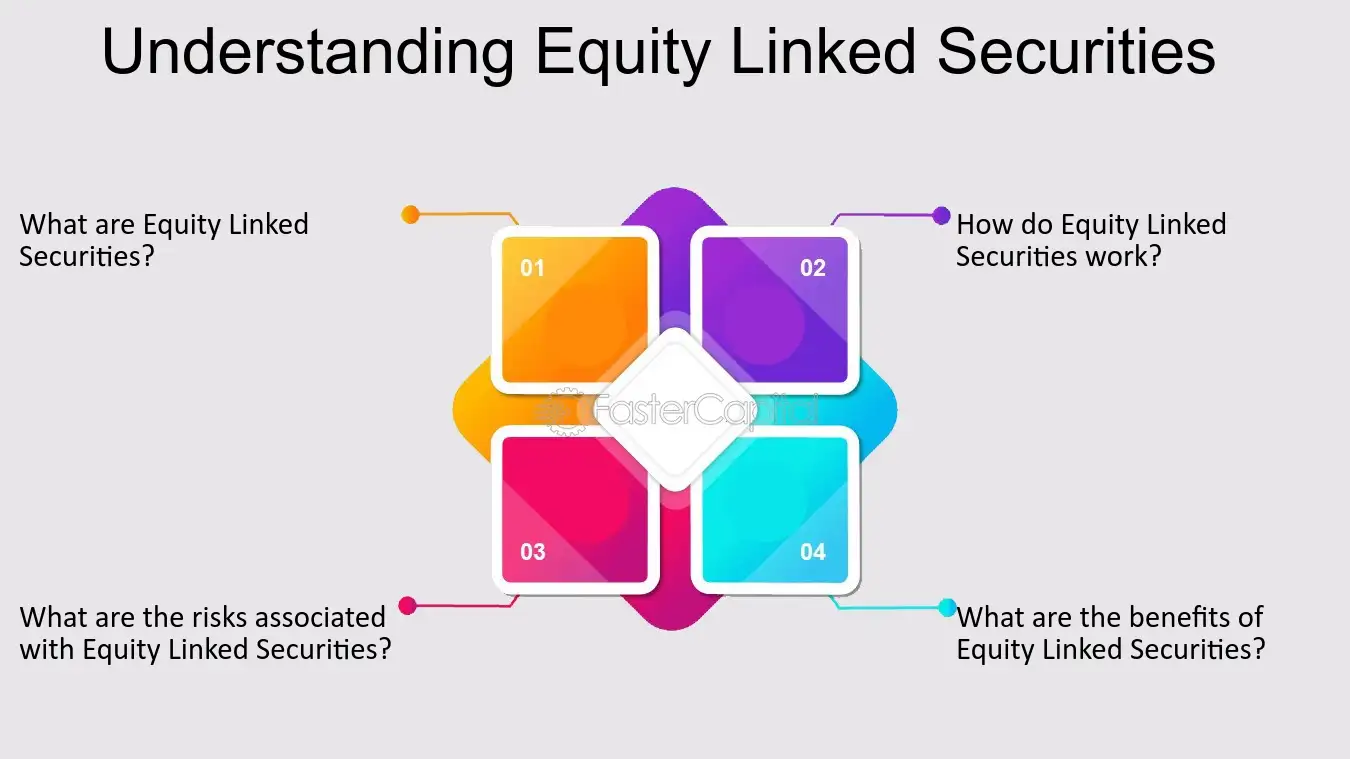What is an Equity-Linked Security?

An equity-linked security (ELS) is a financial instrument that combines elements of both debt and equity. It is a type of derivative that derives its value from an underlying equity instrument, such as a stock or an index. ELSs are typically issued by financial institutions or corporations to raise capital.
ELSs are structured products that offer investors the opportunity to participate in the potential upside of the underlying equity instrument, while also providing downside protection. They are designed to provide a fixed income component, similar to a bond, along with the potential for additional returns based on the performance of the underlying equity instrument.
There are different types of ELSs, including equity-linked notes, equity-linked debentures, and equity-linked deposits. Each type has its own specific features and characteristics, but they all share the common feature of being linked to the performance of an underlying equity instrument.
Types of Equity-Linked Securities
Equity-Linked Securities (ELS) are a type of financial instrument that combines features of both equity and debt. They are structured products that offer investors the opportunity to participate in the performance of an underlying equity instrument, such as a stock or an index, while also providing a fixed income component. There are several types of ELS, each with its own characteristics and benefits.
1. Convertible Bonds:
Convertible bonds are a type of debt instrument that can be converted into a predetermined number of shares of the issuer’s common stock. They offer investors the potential for capital appreciation if the price of the underlying stock increases. Convertible bonds provide a fixed income component through regular interest payments until the conversion option is exercised.
2. Equity-Linked Notes:
Equity-Linked Notes (ELNs) are debt securities that are linked to the performance of an underlying equity instrument. They offer investors the opportunity to earn a return based on the price appreciation of the underlying equity, typically a stock or an index. ELNs may also provide a fixed income component through periodic coupon payments.
3. Reverse Convertible Securities:
Reverse Convertible Securities (RCS) are short-term debt instruments that offer investors a higher yield compared to traditional fixed-income securities. They are linked to the performance of an underlying equity instrument and provide a fixed income component through regular interest payments. However, if the price of the underlying equity falls below a predetermined level, the investor may be required to take delivery of the underlying stock instead of receiving the principal amount at maturity.
4. Contingent Convertible Bonds:
Contingent Convertible Bonds (CoCos) are a type of debt instrument that can be converted into shares of the issuer’s common stock under certain predefined conditions. They are designed to provide additional capital to the issuer in times of financial stress. CoCos may offer a higher yield compared to traditional bonds but also carry a higher level of risk.
5. Structured Equity-Linked Notes:
Structured Equity-Linked Notes (SELNs) are complex financial instruments that combine features of both debt and equity. They offer investors exposure to the performance of an underlying equity instrument, such as a stock or an index, while also providing a fixed income component. SELNs may have customized payout structures based on the performance of the underlying equity, offering potential upside while limiting downside risk.
Overall, equity-linked securities provide investors with a unique investment opportunity that combines the potential for capital appreciation with a fixed income component. However, they also carry a higher level of risk compared to traditional fixed-income securities. It is important for investors to carefully consider their investment objectives and risk tolerance before investing in equity-linked securities.

Emily Bibb simplifies finance through bestselling books and articles, bridging complex concepts for everyday understanding. Engaging audiences via social media, she shares insights for financial success. Active in seminars and philanthropy, Bibb aims to create a more financially informed society, driven by her passion for empowering others.
